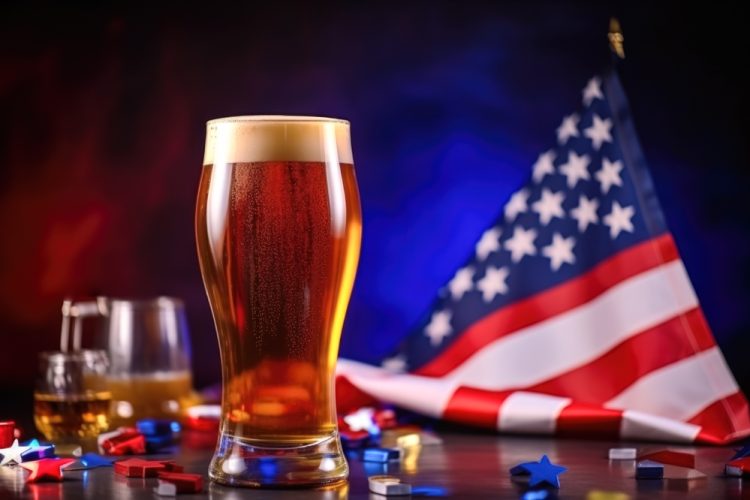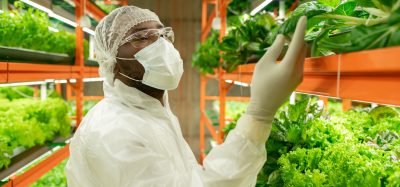Trump tariffs could reshape US beer market, study warns
Posted: 8 October 2025 | Ben Cornwell | No comments yet
Tariffs on the US beer market could squeeze craft breweries, hike prices and hand multinationals a bigger share, researchers warn.


The US beer market faces upheaval under Trump-era tariffs, with new research suggesting multinational brewers could benefit at the expense of independent craft producers.
A study published in Food Policy argues that while tariffs on imports and raw materials may stimulate domestic beer output, the lion’s share of any gains is likely to flow to global corporations, not the nearly 10,000 small breweries that fuel local economies.
“Tariffs can raise domestic beer production costs and the price of imported beer,” explained Aaron Staples, professor of agribusiness management at the University of Illinois Urbana-Champaign.
“When these costs are passed down to the consumer, it can influence beer purchasing behaviours. We wanted to gauge how consumers would respond to tariff-driven price increases and predict how it would impact each market segment.”
Three key findings
Any gains from tariffs would primarily flow to the multinational companies that purchase ads during football games, not the small craft breweries that have become cornerstones of local economies.”
The research, co-authored with Michael McCullough of California Polytechnic State University, used data from more than 700 US beer drinkers to predict the effects of tariffs on demand, market share and consumer welfare.
It highlighted three major outcomes: tariffs could boost domestic production but mostly to the advantage of multinationals; smaller breweries risk losing market share if they face proportionally higher price increases; and overall consumer welfare could fall by $53.1 million to $306.4 million depending on the tariff structure.
Imports are particularly vulnerable. Their share of the US beer market has risen from 14 percent in 2013 to 24 percent today, with Mexico alone accounting for 83 percent of imports.
“Most Mexican beer was exempt from initial tariffs under the United States-Mexico-Canada Agreement, but there is now a 50 percent tariff on the aluminium content of imported beer,” Staples noted. “If this cost is passed down the supply chain, consumers could pay higher retail prices for their favourite Mexican lager.”
That shift could also limit choice. Smaller international brands may withdraw from the US if tariffs make exporting unprofitable. Any resulting gains to domestic production, Staples argued, would “primarily flow to the multinational companies that purchase ads during football games, not the small craft breweries that have become cornerstones of local economies.”
Multinationals adapt, craft brewers exposed
The multinational response has already begun. Some firms are investing in new production facilities, while others are emphasising patriotic branding. “From marketing beer as ‘American made’ rather than ‘domestic,’ multinational firms are playing up the nationalistic aspect of their beer,” Staples observed.
But tariffs are not just about imports. Domestic brewers also depend on international trade for raw materials and packaging inputs, from malt and hops to steel and aluminium. Rising costs in these areas could erode margins and eventually be passed on to drinkers.
“Businesses may try to absorb these at first, but there comes a point where some of these increased costs will eventually be passed along to consumers,” Staples explained.
Smaller craft brewers are least able to adapt. “The multinationals will likely have a better buffer to weather these cost increases,” Staples cautioned. “They have economies of scale, hedge against market disruptions and can negotiate with suppliers. The average craft brewer can’t do this, making them more susceptible.”
The researchers warn that the impact may not be felt immediately. Stockpiled inputs could delay the effect, but once costs hit brewers directly, difficult decisions follow. “The effects could be delayed until the inventory on hand dries up or brewers decide they can no longer afford to absorb these added costs,” Staples said. “But once beer prices go up, we don’t typically see them come back down.”
With tariff policy still a live political debate and some measures facing legal challenges, the landscape remains uncertain. “It’s a very fluid and uncertain situation overall,” Staples concluded, “one that ultimately points to higher consumer prices and a shifting market landscape.”
Related topics
Beverages, Regulation & Legislation, retail, Supply chain, The consumer, Trade & Economy, World Food
Related organisations
California Polytechnic State University, University of Illinois Urbana-Champaign









